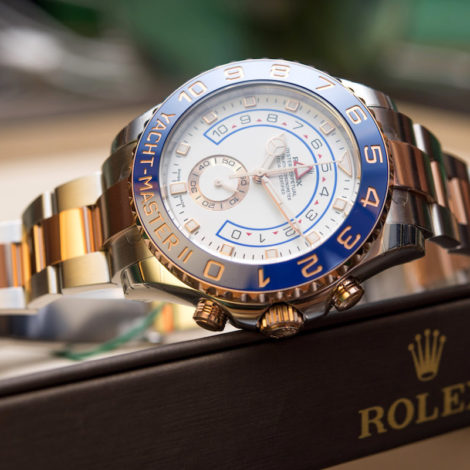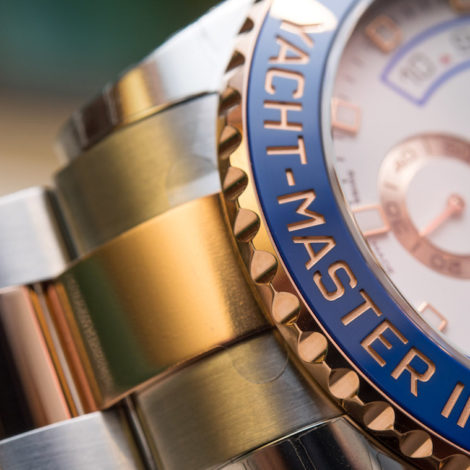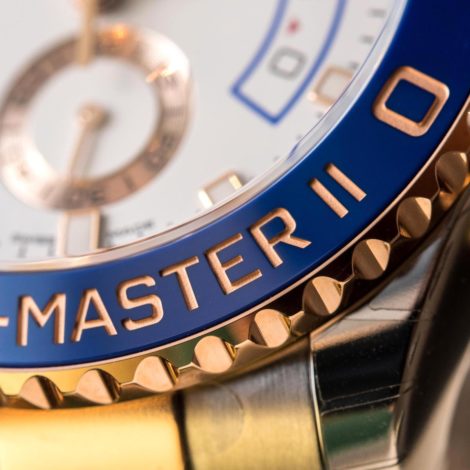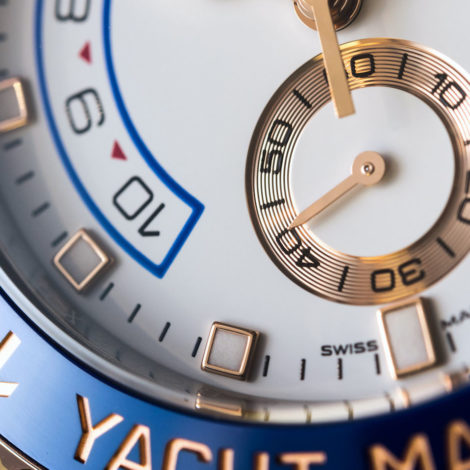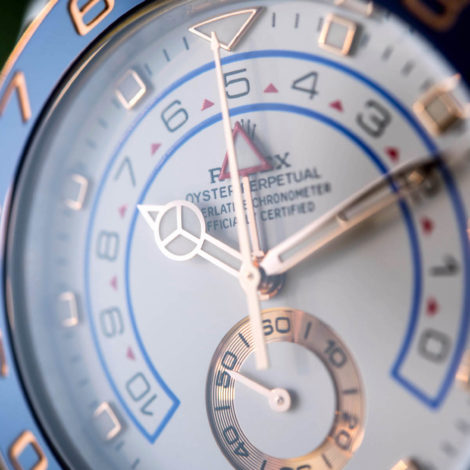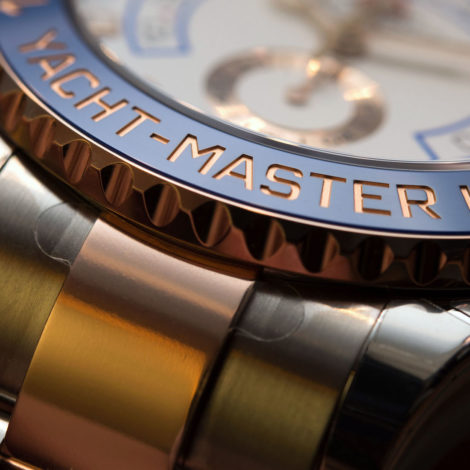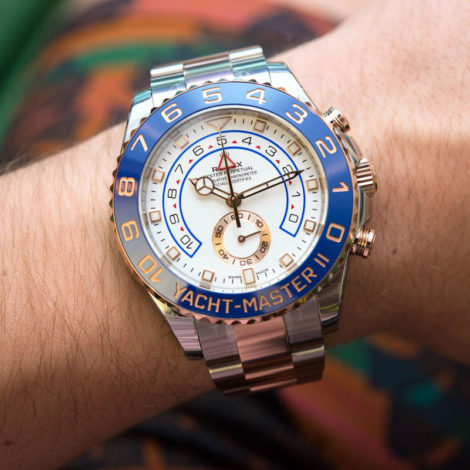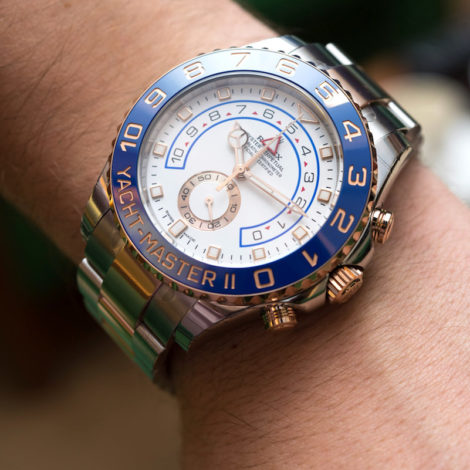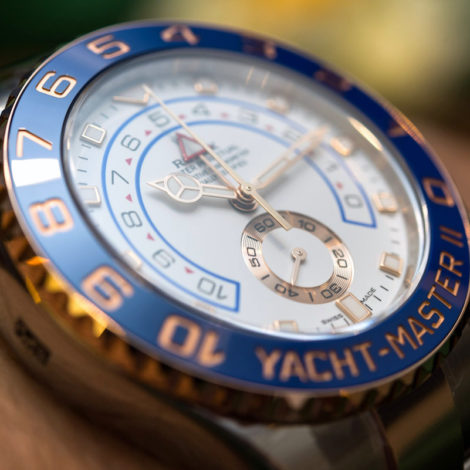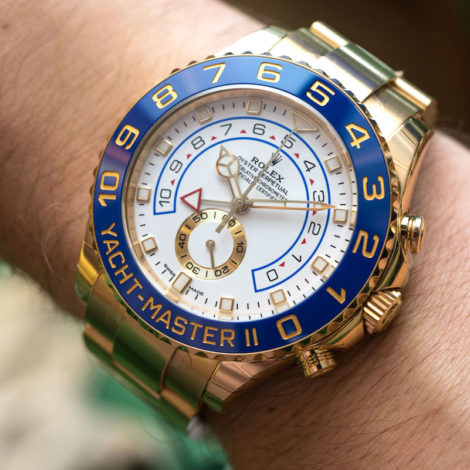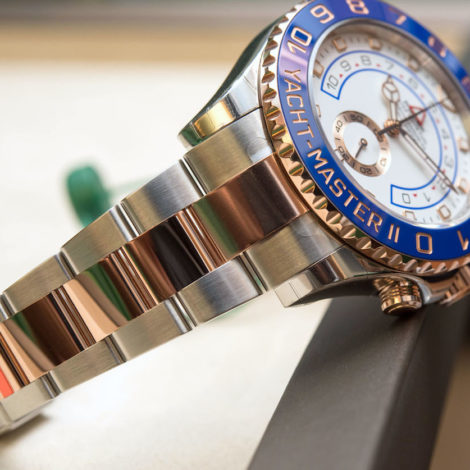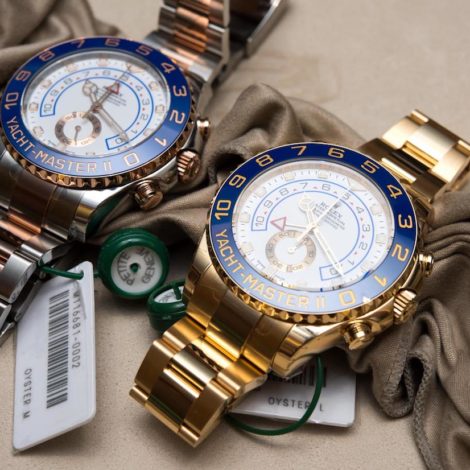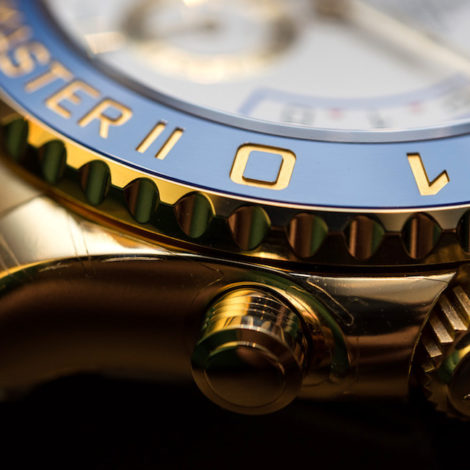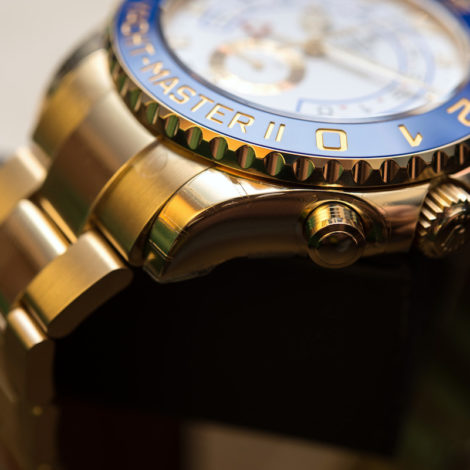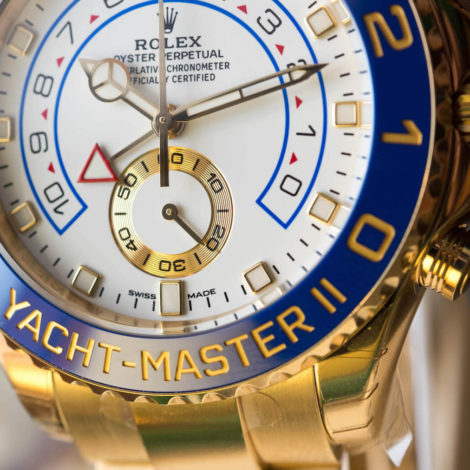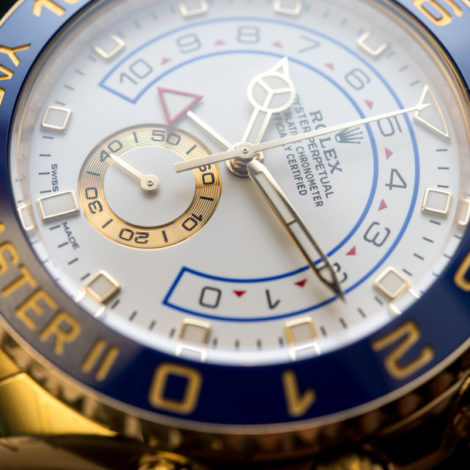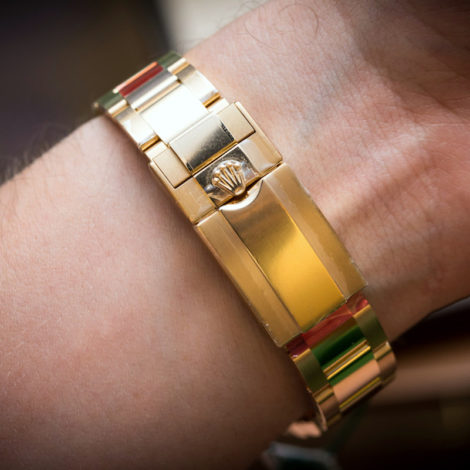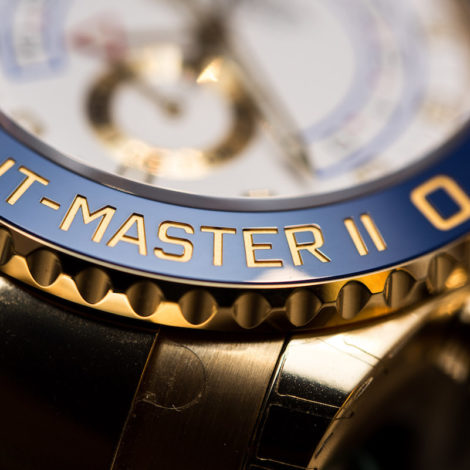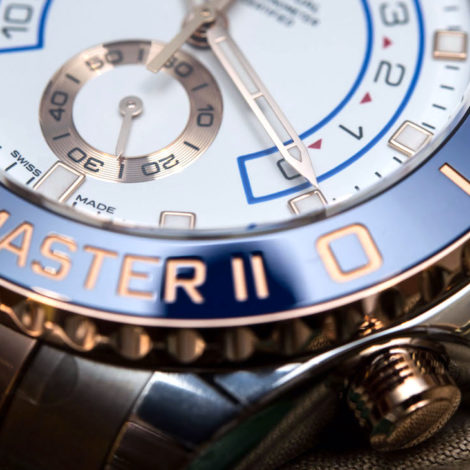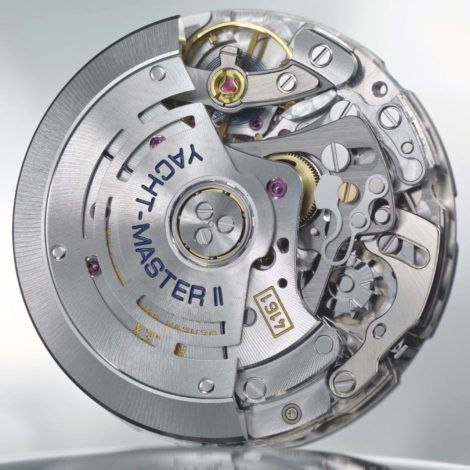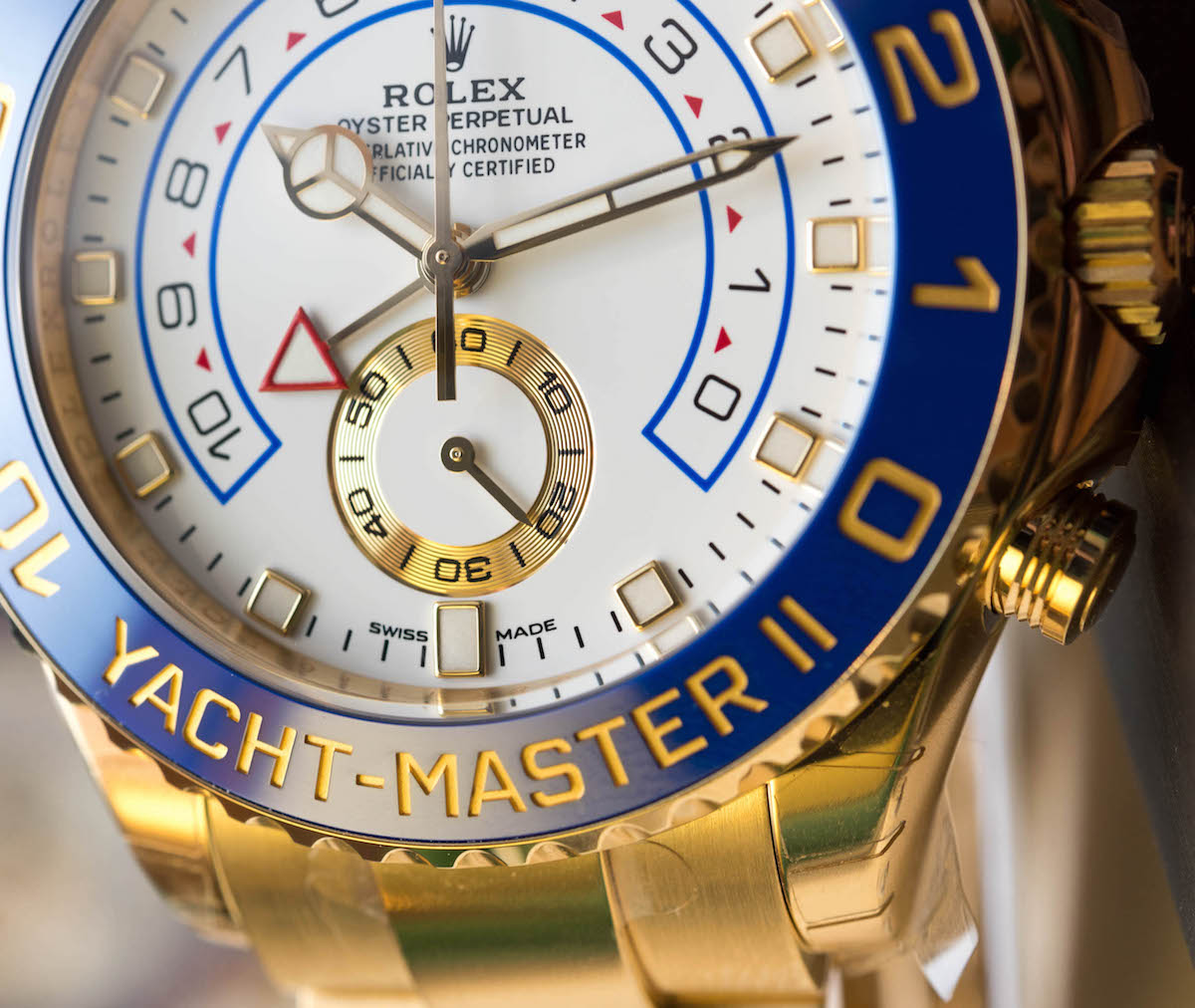
For this reason, the Ring Command rotating bezel system was designed in a way so that it allows the wearer to set the regatta countdown to the desired time by rotating the bezel to the left by 90° and adjusting the easy-to-read red triangle hand to the desired position. Once the bezel is rotated back to its original position, the chronograph’s timer is locked. When this happens, the fly-back function of the chronograph allows the wearer to stop the running chronograph, reset it to the pre-set time between 5-10 minutes and start it again – all at a single press of the lower pusher. Rolex was thoughtful as ever: while the regatta timer’s setting can’t be messed up thanks to its locking by the bezel, the pushers are not locked by a stupid screw-down system (that wouldn’t belong on the Daytona either if they weren’t part of the recognized design). So while the Yacht-Master II is aptly water-resistant with its 100m (330ft) rating without screw-down pushers, the chronograph can be easily modulated on mark of the officials. All these are also incredibly useful features during the high-intensity moments of cooking pasta or boiling an egg – and it is here where I should add that the countdown can be set freely between 1 and 10 minutes on the Yacht-Master II, even if regatta races only need the 5-10 minute adjustability.
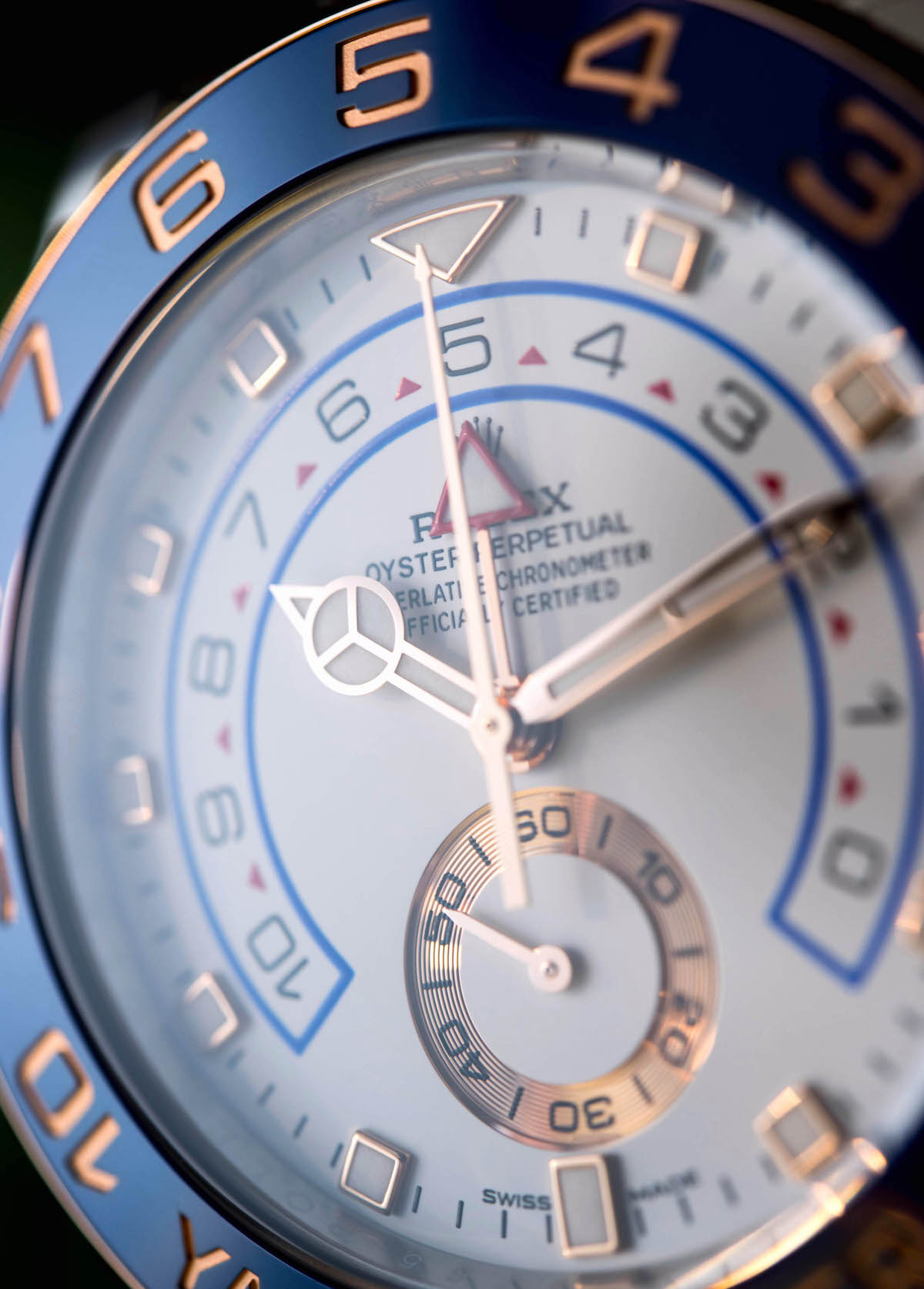
As recently as last year, Rolex has quietly restyled the Yacht-Master II by fitting what Rolex calls the Professional handset – and what us mortals often call the Mercedes hands. Prior to these, the YMII came fitted with stick hour and minute hands, and if its those that you liked better, well, I checked and there’s still plenty of brand new YMIIs on the market with those hands as well. It has to be said that the Professional hands perform here as they do on other Professional Rolexes (yes, that’s an official Rolex product category): the two main hands are easy to distinguish and, kudos to Rolex on this one, they don’t affect legibility either thanks to a few intelligent design choices.
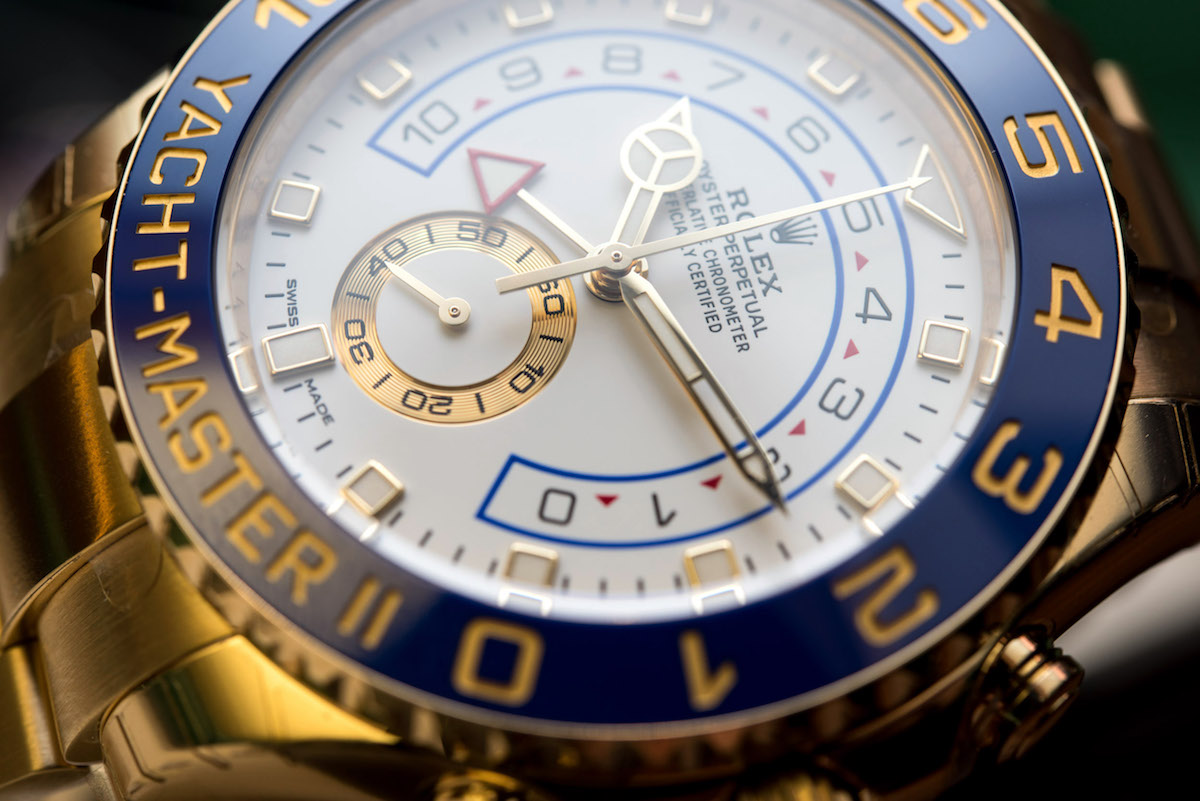
First, the minute hand was skeletonized in a way so that its second half is hollow, therefore allowing for an easy and accurate reading of the regatta minute timer’s red triangle, should the two overlap. Although the hour hand is fixed to the column pinion above the red triangle hand, the latter is still large enough to stand out from underneath – as the circle wouldn’t overlap all of the triangle. Not as ideal as the two being the other way around with the regatta hand falling between the hour and minute hands, but I doubt this would cause any real issue.
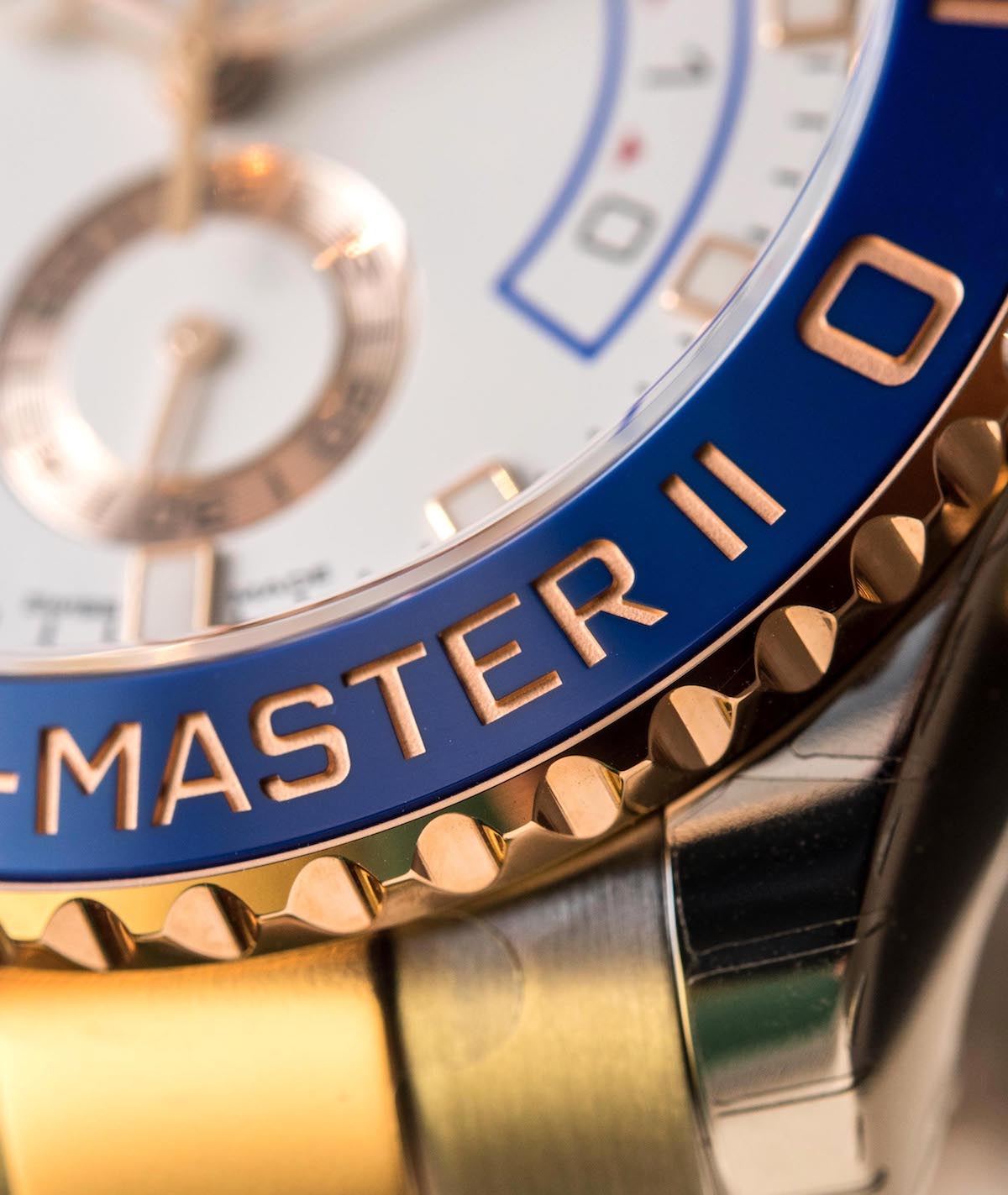
I already mentioned how setting of the regatta timer works, but I did mean to add that setting it is either something you learn or won’t figure out. I wish I knew how many Yacht-Master II wearers were out there in the world right now who’d freak out if they were told the bezel on their watch could rotate. OK, that is an unfair assessment, so I’ll just tone it down to how many could set their regatta timer to 7 minutes immediately, without hesitation. I guess the percentage of those owners is about the same as that of those who know how to use the slide rules on their Navitimers, or those who at least once push their supercars to their limits. I’d imagine it’s a low, low percentage – which isn’t a bad thing or something to be mad about, just fun to think about.
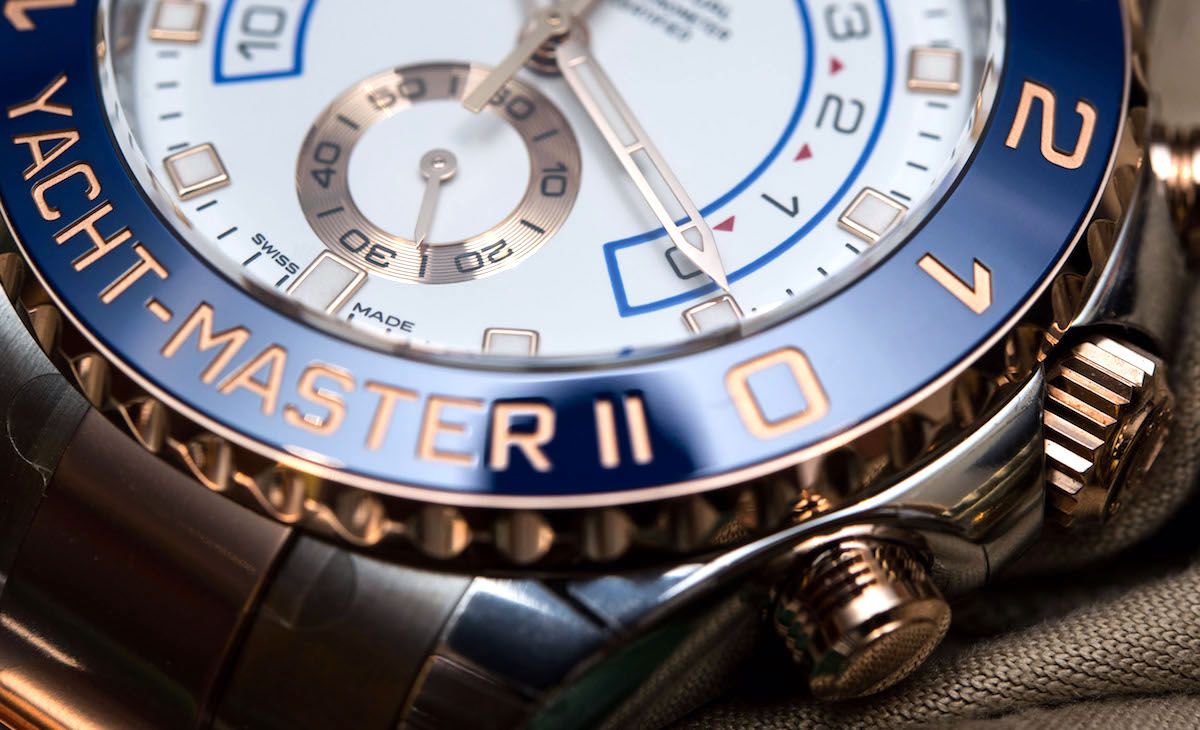
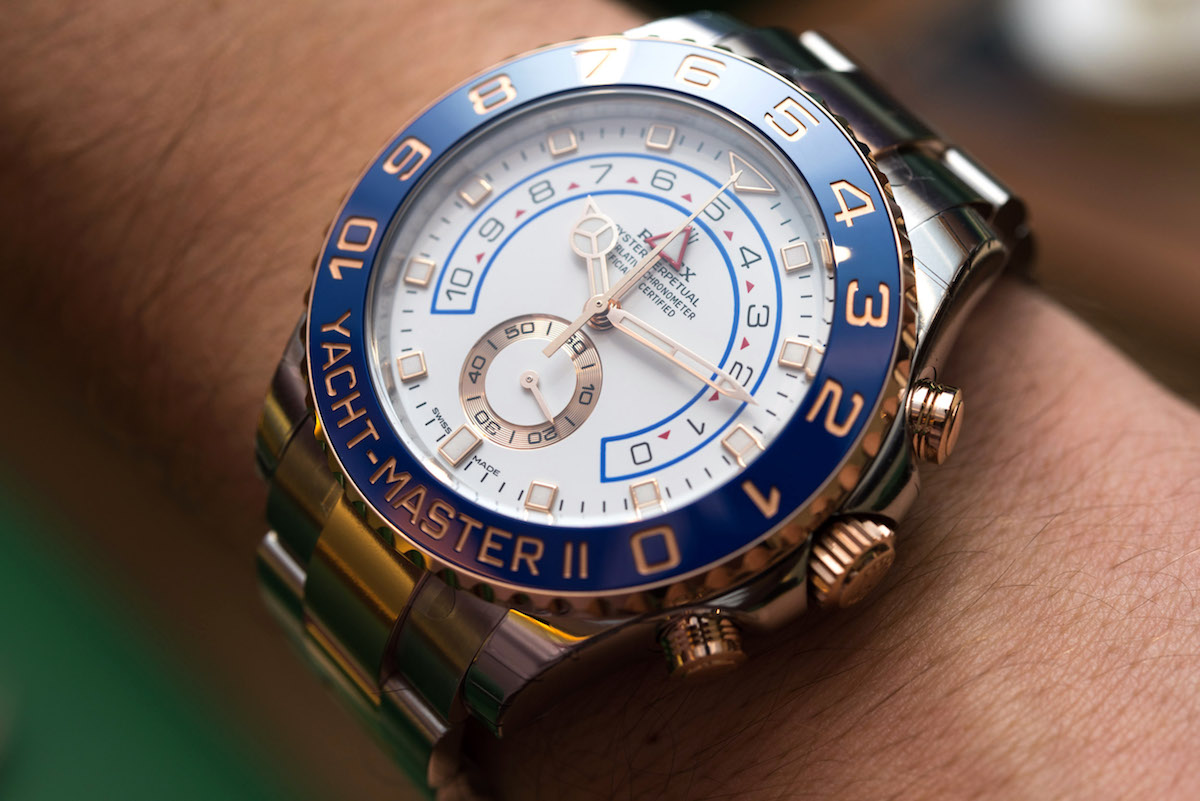
On the wrist, the Yacht-Master II shows many faces. First of all, the material its case and bracelet are crafted from make a big difference. You can have the Yacht-Master II in all-Oystersteel and this is the least-expensive version with a retail price of around $19,000. Strangely, to my eyes at least, this all-steel model isn’t the least flashy version, because that’d be the Oystersteel-Everose gold Rolesor (Rolesor is Rolex-speak for two-tone). This $25k Rolesor version is one of the two pieces pictured in this article and it is this that I think is the least obtrusive one – because it combines the sensible message that two-tone sends, as opposed to the “look-at-me, I’m a big steel watch” vibe that the all-steel version seems to have going on.
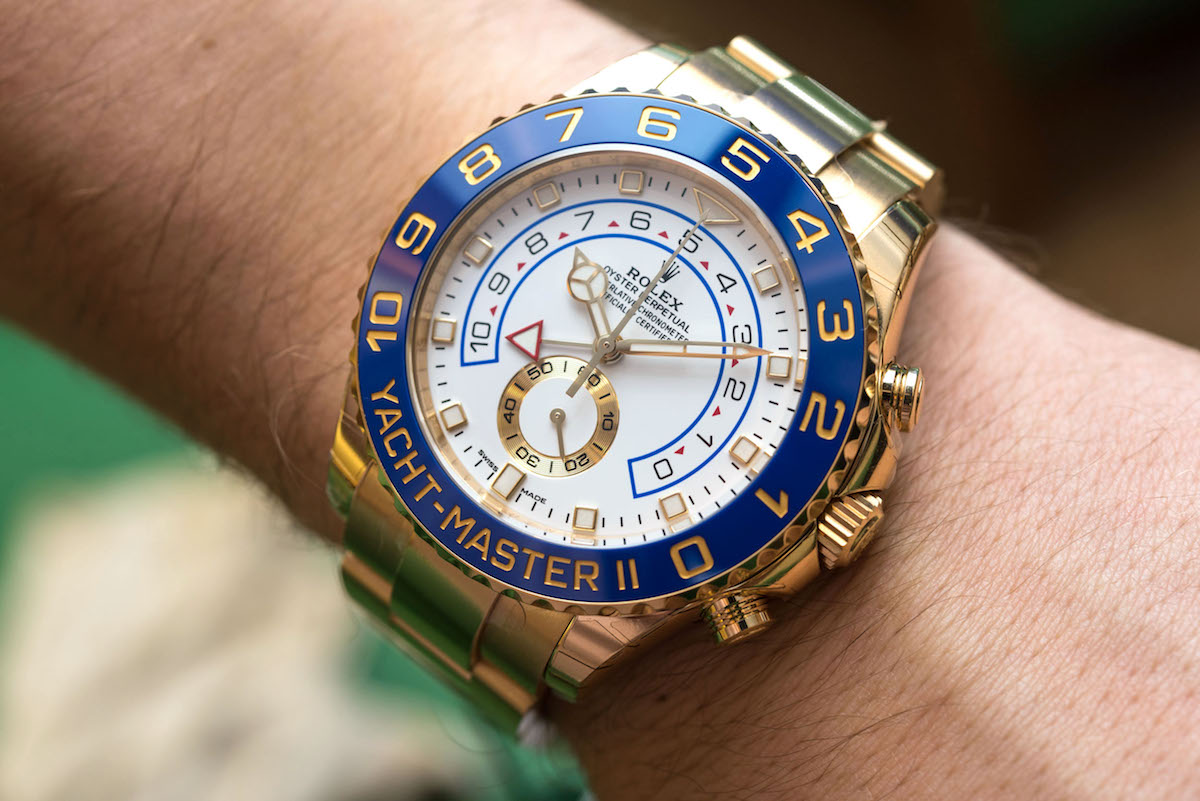
Then things take a drastic, and I do mean drastic turn with the $44k all-yellow-gold version that makes you feel like you’re an aptly dressed extra in Wolf of Wall Street. Any all-gold Rolex is a statement watch, but while you can make a case for yourself wearing, say, a yellow gold Day-Date 40, this one right here is less of a President’s watch and more of a premiership footballer’s. There is something amusing about having a watch with this level of visual complexity and the ostentatiousness of yellow gold around the wrist. Still, as a practical joke, it’s not as good as this factory-bedazzled GMT, so yeah, you can always be one-upped, even within Rolex territory – so just get the two-tone. The end of the line is the piece with an all white gold bracelet and a platinum bezel that costs a good couple grand more than the yellow gold version.

With a properly sized bracelet – not as seen directly above – the two-tone, steel, and Everose gold versions make for a great everyday wearer, pretty much the same way an Audi R8 is a great everyday driver. The YMII is large at 44mm wide, but has a strangely good weight to it, especially in this configuration – the all-gold version is as heavy on the wrist as it is on the eyes.
At a time and age when people are buying perpetual calendars because “do you even know how complicated it is?” wearing a Yacht-Master II shouldn’t be as odd as it may at first appear. Its engineering is absolutely mind-boggling, more exotic, arguably more useful on a daily basis – for those who like the idea of getting their pasta al dente with a $25,000 watch – and you can play with it at any given time, whereas touching a perpetual calendar the wrong way will make you wish you didn’t.
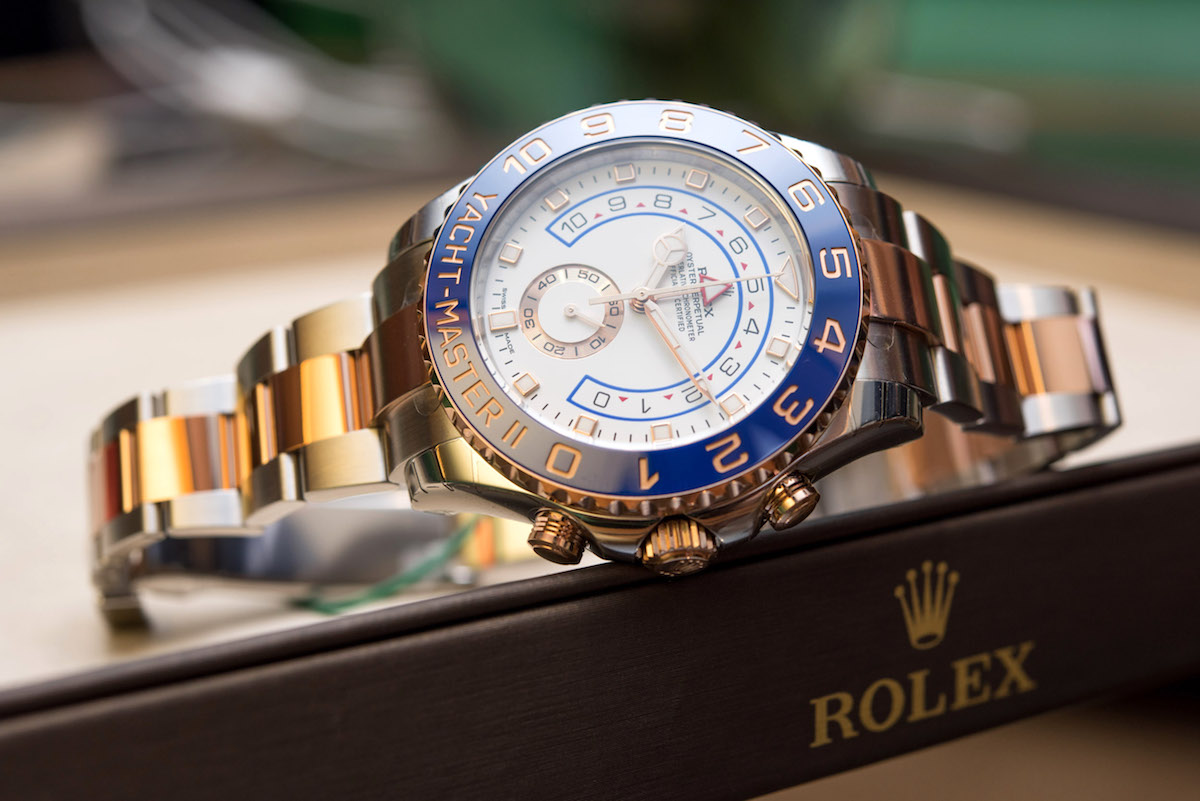
After all is said and done, the Yacht-Master II surprised me in a positive way and made me feel stupid for secretly disliking and ignoring it for so long. It’s a great piece of machinery with a styling to its case, bezel, and dial that can only truly be appreciated in the metal. It’s distinctly Rolex down to its last detail, but it’s also unlike any other Rolex ever. In the eerily classy steel-Everose combination, with its neatly labeled, blue ceramic bezel and crisp white dial with further Everose gold accents, it’s a visually pleasing watch that I wouldn’t mind wearing on a daily basis.
Now, my only worry is Rolex dropping this quirky, dedicated, and high-effort side and letting us all die without seeing a comparable exercise ever again. I am eager to see what their next unexpected, highly complicated piece is going to be. If you feel the same but don’t want to wait and have the money to spend, I’d recommend filling this void with the Yacht-Master II.
Prices for the Rolex Oyster Perpetual Yacht-Master II range between around $19,000 and $48,000, depending on the variation. rolex.com

